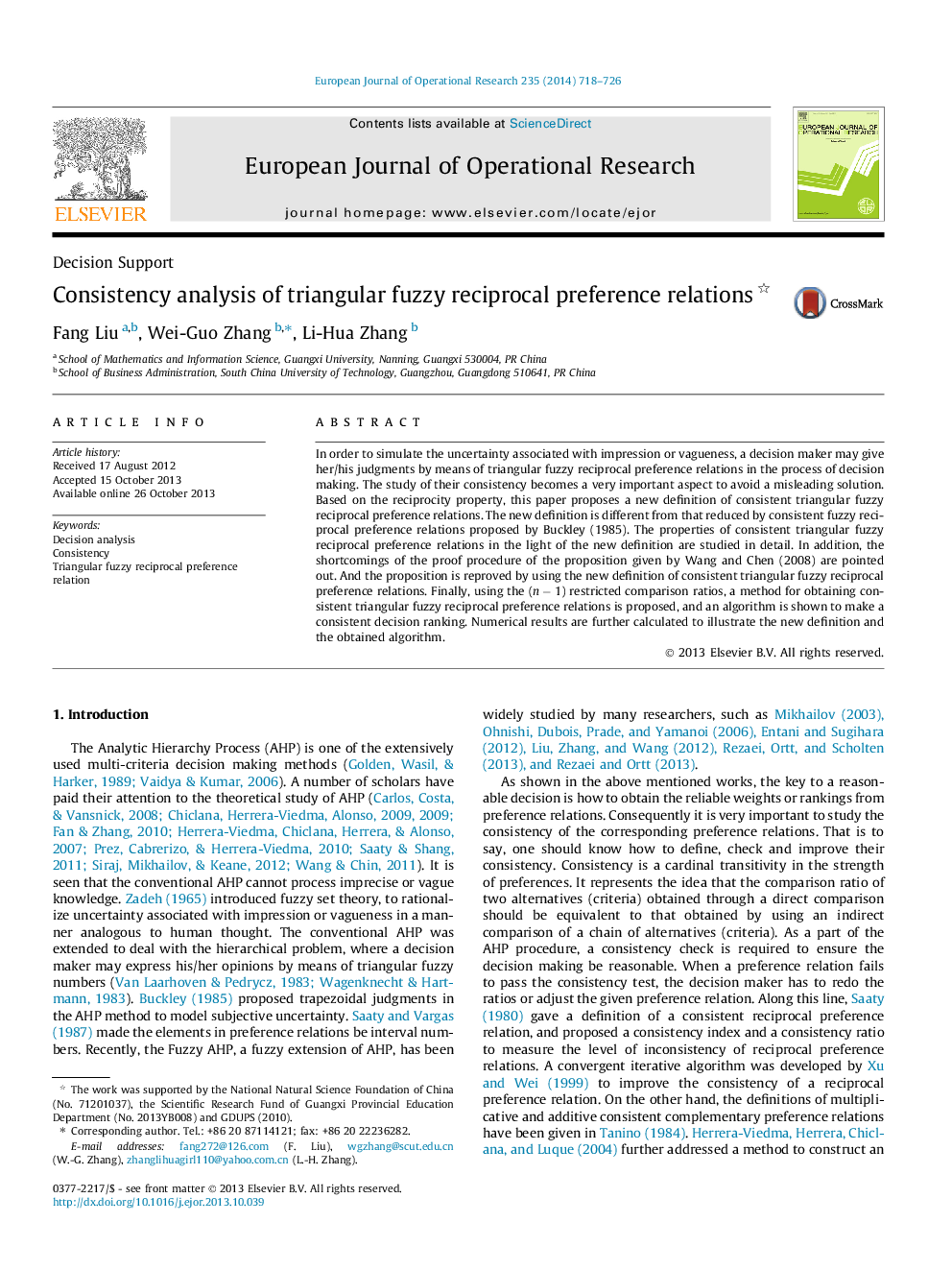| کد مقاله | کد نشریه | سال انتشار | مقاله انگلیسی | نسخه تمام متن |
|---|---|---|---|---|
| 476679 | 1446030 | 2014 | 9 صفحه PDF | دانلود رایگان |

• The shortcomings related to the known consistent fuzzy reciprocal preference relations are shown.
• A new definition of consistent triangular fuzzy reciprocal preference relations is proposed.
• The corresponding consistency properties are studied in detail.
• A new algorithm is given to make a consistent decision making.
In order to simulate the uncertainty associated with impression or vagueness, a decision maker may give her/his judgments by means of triangular fuzzy reciprocal preference relations in the process of decision making. The study of their consistency becomes a very important aspect to avoid a misleading solution. Based on the reciprocity property, this paper proposes a new definition of consistent triangular fuzzy reciprocal preference relations. The new definition is different from that reduced by consistent fuzzy reciprocal preference relations proposed by Buckley (1985). The properties of consistent triangular fuzzy reciprocal preference relations in the light of the new definition are studied in detail. In addition, the shortcomings of the proof procedure of the proposition given by Wang and Chen (2008) are pointed out. And the proposition is reproved by using the new definition of consistent triangular fuzzy reciprocal preference relations. Finally, using the (n − 1) restricted comparison ratios, a method for obtaining consistent triangular fuzzy reciprocal preference relations is proposed, and an algorithm is shown to make a consistent decision ranking. Numerical results are further calculated to illustrate the new definition and the obtained algorithm.
Journal: European Journal of Operational Research - Volume 235, Issue 3, 16 June 2014, Pages 718–726